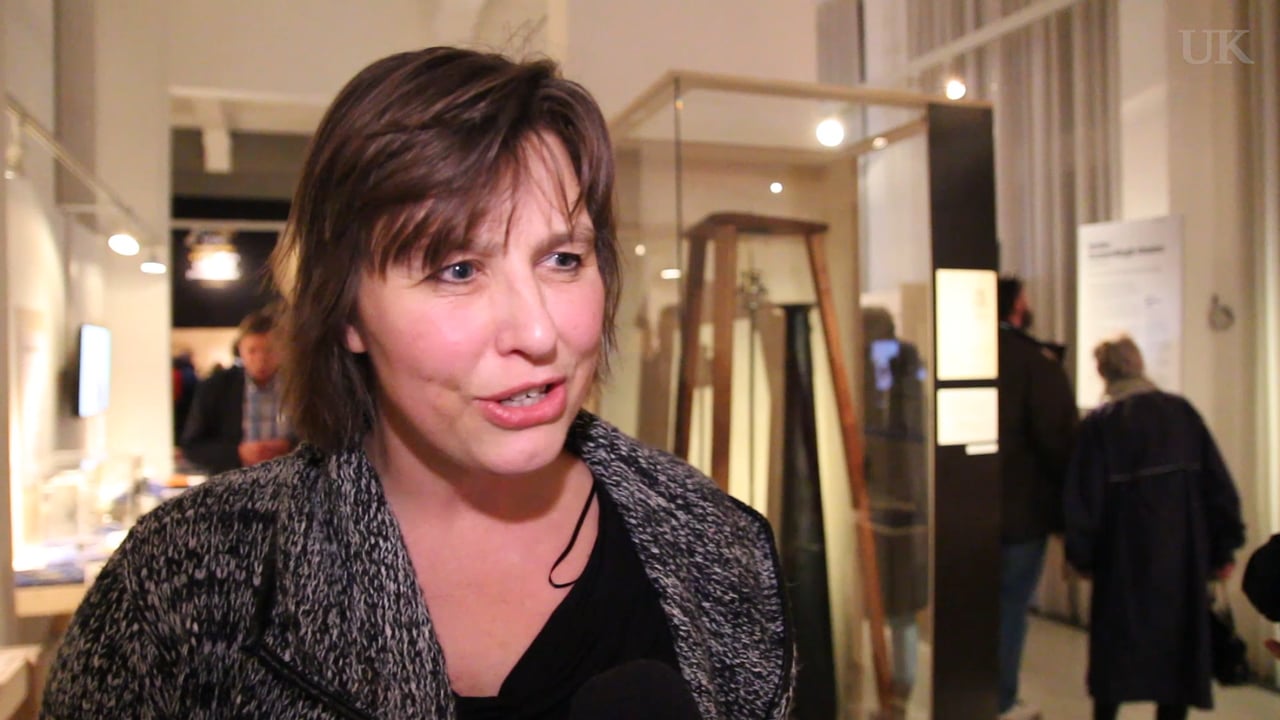At around 4:30, the hall had filled with students, colleagues and other interested people. Feringa makes some quick notes. He does not often prepare his speeches, but for this occasion, he has done his homework. Feringa is honoured that he is the one to open this special exhibition because he feels strongly about its theme: researchers who did their work by tinkering and playing at the RUG, like him.
The admiration for Feringa is tangible; judging by the many backpacks and hoodies a lot of students came for the opening. Feringa thanks the ‘F-side’ – his students as the popular television show De Wereld Draait Door dubbed them – for their presence. Feringa: ‘I want to argue for space to play at the university; that is what science is all about. Students should get the space to play and discover. To adventure!’
Nobel medal
After the speech, the group, with rector magnificus Elmer Sterken taking the lead, leaves for the University Museum where, in the back of the main hall, Feringa’s work is on display. Feringa officially opens the exhibition together with Sibrand Poppema.
As the crowd loudly applauds, Feringa hands the Nobel medal to Poppema. ‘I’ve never received a Nobel Prize this easily,’ he says jokingly. The medal is an official replica made by the Nobel Committee and can be admired in the museum from Thursday onwards.
Christien Boomsma of the University Museum says that Feringa had the replica made almost immediately after the award ceremony. With a laughing, she says, ‘A winner once sold his medal for 800,000 euros to pay for his health expenses. So it’s no surprise that Feringa wants to keep his real medal.’
Hidden gems
Feringa’s medal may be the piece de resistance, but there is much more to be seen in the exhibit. Nobel Science takes the visitor on a journey along Ben Feringa’s and Frits Zernike’s work, but above all else tells the tales of remarkable academic research at the RUG that was not awarded with the Nobel Prize; hidden gems from the university’s history.
One example: Decades before Zernike won a Nobel Prize for his phase-contrast microscope, rector magnificus Striks tinkered on a similar machine in the basement of the university. He published articles on his design, but then stripped it down for parts.
The researchers in the exhibition often made their discoveries through tinkering and playing, and they often achieved results. Albert Szent-Györgyi laid the foundation for his ground-breaking work that resulted in the Nobel Prize for Physiology in 1937 in the basement of RUG. In the 1920s, he discovered vitamin C in his lab of the Groningen basement floor. The brilliant chemist later left for Cambridge.
Major production
‘Nobel Science’ is a major production that was paired with blood, sweat, tears and sleepless nights. ‘We put one year’s work into three months,’ Boomsma says. The idea for the exhibition was already planned, but after it was announced that Feringa was awarded the Nobel Prize, it was turned into Nobel Science.
Feringa’s busy schedule did not make things any easier: the University Museum only received the equipment for Feringa’s section on nanomotors two weeks before the opening. But it was worth it. Boomsma: ‘I’m extremely proud!’
Entry to the Nobel Science exhibiti is free. The exhibit will be on display until 29 May. The University Museum is located at Oude Kijk in het Jatstraat 7A.




